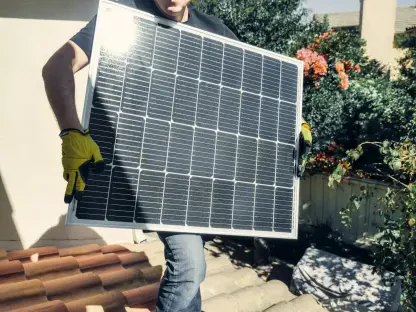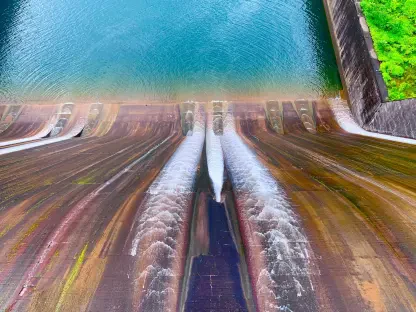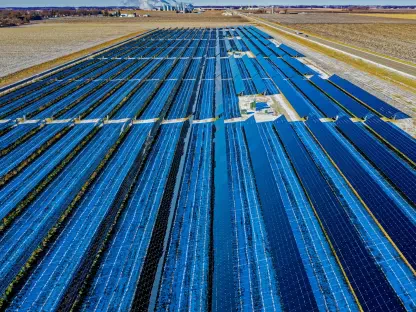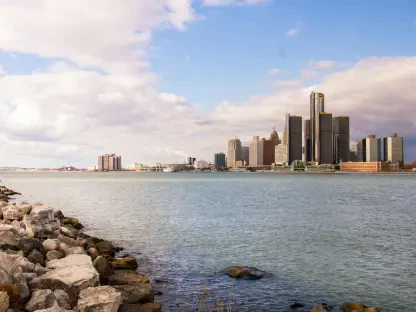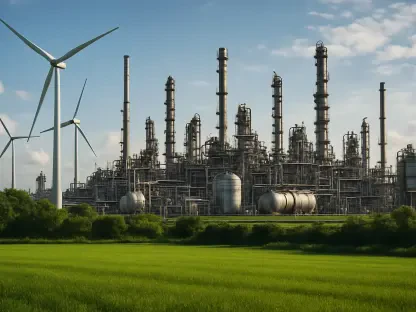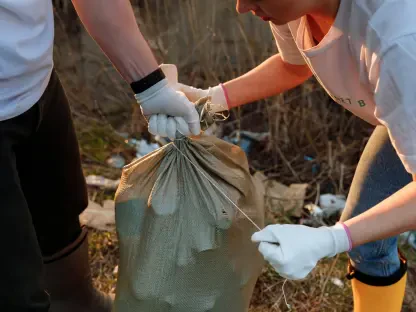Bowling Green is in the midst of a significant transformation driven by the impending arrival of two new industrial giants: Abbott Laboratories and an unnamed data center. These developments promise a surge in local employment and economic growth, compelling the city to enhance its water supply capabilities. With strategic planning, infrastructure upgrades, and community collaboration, Bowling Green is gearing up to meet the increased water demand effectively. The anticipated rise in water consumption necessitates forward-thinking approaches to ensure the city’s water management infrastructure is robust and resilient.
Strategic Water Supply Planning
Bowling Green’s water strategy revolves around ensuring its infrastructure can handle future industrial needs and accommodate the water demands from Abbott Laboratories and the data center. Abbott Laboratories, investing $500 million in a new plant and creating 450 permanent jobs, will require up to one million gallons of water daily. Similarly, the nearby unnamed data center is projected to use around 600,000 gallons of water daily. To address this, the city is undertaking extensive strategic planning and investments.
Stress testing the existing facilities, the city identified that its current water treatment plant, which has a capacity of 10 million gallons per day but typically treats about 5 million gallons per day, has room for growth. However, the city sees the need for scalability and has set a course for infrastructure upgrades to ensure long-term sustainability. This approach involves not only expanding current facilities but also investing in new technologies and processes to manage the increased demand efficiently. Both industrial giants are expected to commence operations in the coming years, making it imperative for the city to act swiftly and decisively.
Infrastructure and Capacity Upgrades
Key to Bowling Green’s water supply expansion is the $4 million membrane treatment process expansion at the water treatment plant, designed to meet the upcoming demands. This modern approach to water treatment not only increases capacity but also improves the quality of treated water. The expected completion by 2025 aligns well with the operational timeline of Abbott Laboratories and will ensure that the plant is prepared for the influx in water usage. The expansion will also help maintain consistent water quality standards amid growing consumption.
Moreover, the city is focusing on its storage capabilities. Bowling Green plans to double its reservoir capacity, which involves acquiring additional land adjacent to the existing water treatment plant. This expansion will add between 100 to 150 million gallons of raw water storage, providing a buffer that can cover 30 to 45 days of demand. The enhanced storage capacity ensures that the city can manage peak demands and potential supply disruptions, thereby offering a reliable water source for both residents and industries.
Collaborative Efforts and Community Impact
Bowling Green’s water infrastructure strategy is a collaborative effort involving multiple stakeholders. The Northwestern Water and Sewer District (NWSD) plays a crucial role by facilitating the distribution of increased water capacity to nearby villages, including Bloomdale, Bairdstown, and Weston. This collaboration ensures a broader regional benefit and supports a strategy of mutual resource-sharing. The arrangement underscores the importance of inter-community cooperation in handling water resources and highlights the shared responsibility in sustaining regional growth.
Public Infrastructure Director Brian O’Connell and Assistant Utilities Director Jim Odneal emphasize the importance of these joint initiatives. The robust relationship between Bowling Green and the NWSD exemplifies how community collaboration can lead to improved infrastructure and resource management, benefiting the entire region. By pooling resources and expertise, the collaborative efforts aim to create a resilient water supply system that can adapt to future demands and challenges effectively.
New Water Tower Construction
To cater specifically to the data center’s significant water requirements, Bowling Green is also constructing a new 2-million-gallon water tower. The tower, funded by the data center developers, will not only support the facility’s operations but also strengthen the overall water supply network in the area. This project highlights the city’s commitment to meeting industrial needs while maintaining robust service for existing residents. The new water tower is expected to enhance capacity and reliability across the board, ensuring that the added strain from new industrial activities does not compromise the city’s water system.
By incorporating advanced design and construction techniques, the new water tower will serve as a critical component in Bowling Green’s water infrastructure. It will provide the necessary pressure and storage capacity to meet peak demands, offering a consistent and reliable supply to the data center and surrounding communities. This initiative is part of Bowling Green’s broader strategy to modernize its water infrastructure, ensuring that the city is well-prepared for sustained industrial growth and development.
Addressing Future Growth and Sustainability
Bowling Green is undergoing a major transformation due to the upcoming arrival of two industrial powerhouses: Abbott Laboratories and a yet-to-be-named data center. This anticipated development is expected to generate a significant boost in local employment and drive substantial economic growth. In response, the city is proactively improving its water supply systems to cater to the rising demand. Such strategic planning involves upgrading vital infrastructure and fostering community collaboration to ensure that these new demands are met effectively.
The anticipated rise in water consumption requires innovative and forward-thinking measures to make sure the city’s water management infrastructure remains robust and resilient. Bowling Green’s approach includes modernizing treatment facilities, expanding reservoir capacity, and implementing advanced water conservation techniques. Additionally, the city is engaging with local stakeholders and businesses to create a sustainable water usage plan that benefits everyone. By taking these comprehensive steps, Bowling Green is poised to support the increased needs of its growing industrial base, ensuring a prosperous future for its residents and businesses alike.



